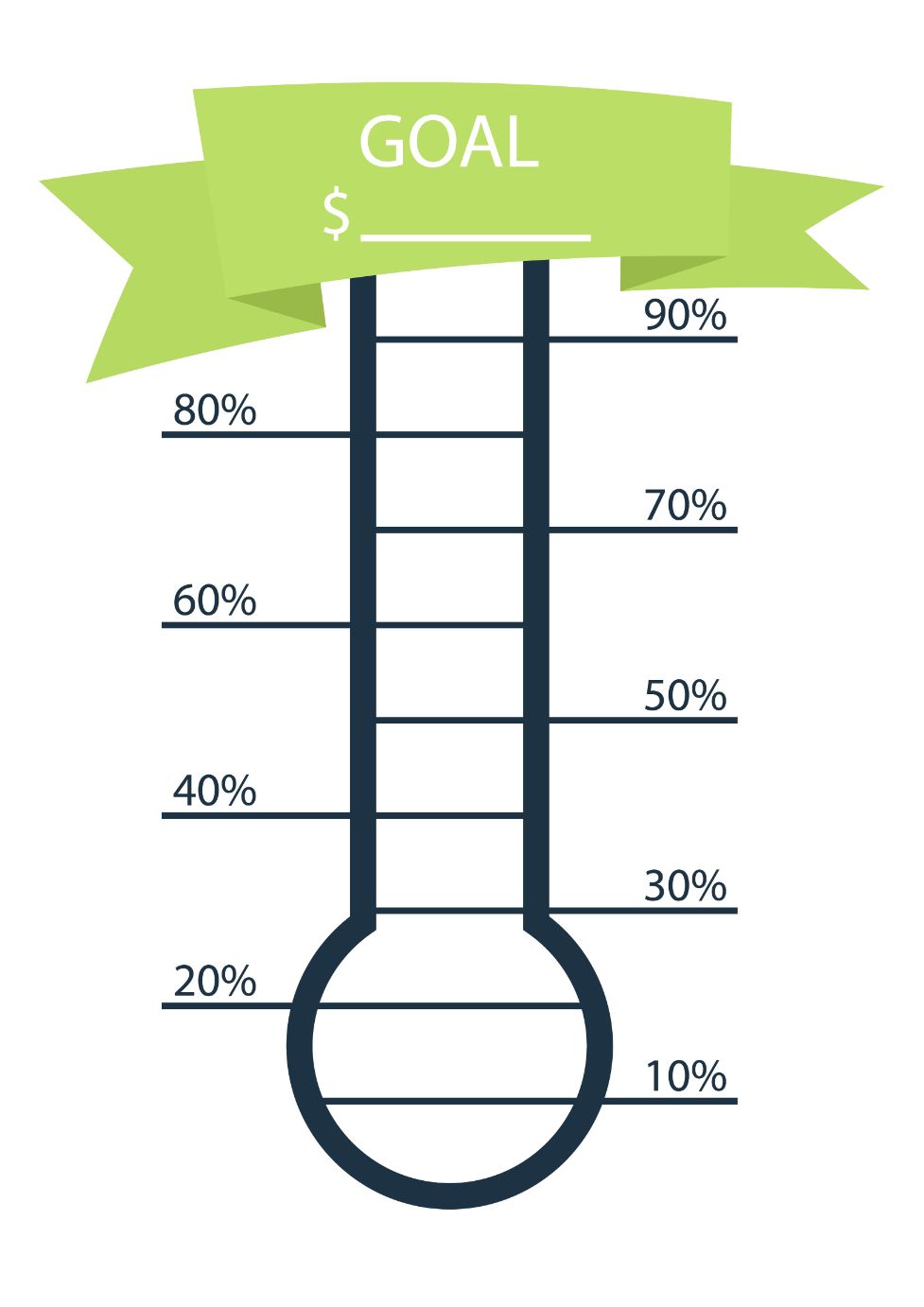Have you been thinking about setting some New Year Financial Resolutions with your family?
The New Year always brings promises of a fresh start. We’re going to start working-out, eating right, and saving towards goals. We can’t tell you how often to hit the gym, or whether you should avoid carbs, but we have some thoughts on instilling healthy financial family habits this new year.
It’s amazing to think about the psychological effect of a new year. There’s no particular reason that turning one page in the calendar should inspire so much change. But it’s cultural, and now so ingrained in our brains that there’s no going back.
What we really should do is New Year’s Resolutions, Spring Check-In, Summer Restart, Fall Push, and Winter. Just Winter. Because by then we’ve mostly given up and are just waiting for January to restart.
But of course, January is the most important. It sets the tone for the year. It’s a time of truth – when we examine ourselves and decide on what we need to change. It’s actually a very healthy opportunity for growth.
It’s hard to improve if we don’t first have an honest conversation about what needs improving. It might not be easy, but it’s necessary for improvement.
As parents, we set the tone for our children’s relationship with money. Money is more about the mind than it is the math. It’s up to us to make sure it’s a healthy relationship.
Table of Contents
- 1. Set a Family Savings Goal
- 2. Pick a Family Cause
- 3. Take the Taboo out of Money Conversations
- 4. The Childhood Budget
- 5. Get Out of the House
- Conclusion
Here are our top five tips for starting off the new year right with some healthy financial habits for your family.
1. Set a Family Savings Goal

There is nothing more beautiful than families working together towards a goal. Families are like sports teams – everyone has a role, and the team plays better when everyone is contributing. This holds true whether the family is trying to keep the house tidy, be on time to engagements, or save towards a financial goal.
Money is a tool that helps people live out their values. Different people, and different families, value different things. Set a date and time for a family meeting at the beginning of the year. At this meeting, set a savings goal for your family which rewards everyone equally. This goal for saving money will reflect your family values, and it should be something you all value.
This is a goal that can be targeted no matter your family’s financial situation. One family might be saving towards an elaborate meal and evening together, another for a vacation, or another for something for their home (a new TV for family movie nights) or building an emergency fund. It doesn’t have to take the entire year to reach your goals – you could even set several mini-goals throughout the year.
Everyone in the family can contribute towards this goal. Mom, dad, and working teenagers can contribute from their paychecks. Younger kids can contribute with their allowance money they earn through chores or part of gifts or rewards they receive throughout the year. They can also contribute by helping around the house so that mom and dad can have a little more time to finish up a work project or work a little later.
Contributions and goals are different for each family, but the spirit of cooperation will be the same. Kids will learn that pitch-in mentality which is so crucial to success later in life. They will also learn that the goal, whether it’s a meal, vacation, or item, costs money, and can be earned.
It will be important to keep track of progress so everyone in the family can see. There is nothing worse than contributing to something and never seeing the needle move. You can do this very simply – this family goal thermometer is a fun way to display progress.

If you are using the My First Nest Egg App, it is easy to create a new child account and name it after your family instead of an individual, and then everyone can contribute from their nest eggs virtually.
Everyone will love watching the money add-up and achieving a family goal together. It’s both a family team-building exercise and a financial education lesson rolled into one.
2. Pick a Family Cause

At the beginning of the year, sit down as a family and pick a charity to support. It can be several throughout the year or one single one you support all 12 months. This could be a specific person or family you’re supporting or an organization. It’s important for everyone to have input so all family members feel a part of the cause.
It is generally well-accepted that being generous makes you happier. But, according to a 2017 study, even a commitment to generosity can bring increased happiness. Just this initial family meeting and commitment towards supporting someone, or something, in need will increase your family’s happiness. It will also help your kids feel like they’re part of something bigger and look outside themselves.
Kids naturally start out life a little selfish. Most are born into families where they are the center of the universe. They cry, and a parent comes running, They ask, and their wish is our command. We shower them with love, affection, and affirmation.
As they grow, it’s important to show them that they are not in fact the center of the universe, even though they might always be the center of ours. There is a world outside of them that needs them, and a family charity is a beautiful way to show them the happiness that comes from giving instead of receiving.
The charity or cause your family picks should reflect your family’s unique values and situation. For some families it will be financial or in-kind support, for others, it will be time and volunteering, and still for others a combination.
However, you decide to support your cause, make sure to keep track of your donations, whether money or time. You can do that with the same goal thermometer shown above, or with the My First Nest Egg app.
Simply use your family’s egg you set up above to track your family’s savings goal and add donated time, money, and acts of kindness (perhaps a donated toy) towards the Give Egg.
When December rolls around your family will be able to reflect on how much you’ve given throughout the year, and the positive impact you have made on someone else’s life. That is a very powerful gift to give your children.
3. Take the Taboo out of Money Conversations

Money is all too often a taboo topic. Some studies have shown that it’s the taboo topic. A 2018 survey conducted by the Capital Group showed that people would rather talk about anything other than money, including marriage problems, mental illness, drug addiction, race, sex, politics, and religion.
This is a major problem for families, the first and most important learning ground for children. 40% of people who did not discuss finances growing-up have nothing in savings.
Not discussing money doesn’t mean children won’t be exposed to the topic, it just means that they will acquire their understanding and values surrounding money from a different source. Where parents leave a void, peers and commercial culture will step in.
The New Year is the perfect time to make a commitment to start discussing money with your children. Parents often shy away from conversations surrounding money with the best of intentions. Either we don’t want to worry children, or we don’t want to place an outsized importance on money.
There are so many negative sayings about money: money isn’t everything, money is the root of all evil, and money can’t buy happiness. Whether you ascribe to those or not, money exists. It is used literally every single day. There is a finite supply. Money impacts our daily lives in more ways than most of us would like to admit.
It’s time to allow our children into our decision-making processes surrounding money. This doesn’t mean we need to open them up to all of the issues surrounding our financial situations. Like most subjects, kids don’t need to know everything, and there are age-appropriate ways to discuss money.
For very little children, this involves bringing them to the store when we shop and helping them understand the basic concept that things cost money. Kids as young as three years-old can understand that they don’t just take things from stores without first paying. They love setting up fake grocery stores and checking parents out as they buy items from their playrooms.
As they get older you can explain more about needs versus wants. You can also start explaining your buying choices in a way that reflects your family’s values and financial situation. This might involve a discussion around why you choose to eat more meals at home, limit movie theater trips, or splurge on something which is important to you.
As kids age, we can begin discussions about the use of credit v. debit cards, specific savings mechanisms (401Ks, 529s, IRAs), and car loans and mortgages. More than half of Americans don’t know what a mortgage is. Y
our child can be ahead of the financial education game if you just talk to them and teach them as they grow. We all expect our children to live on a budget one day, but how will they learn how to if we don’t teach them?
Most families have budgets, and teaching children how you set that budget and live within it will help them do the same one day.
4. The Childhood Budget

All too often children grow up, and parents complain that they think money grows on trees. We should probably have some introspection to understand where that attitude originates. If your high school senior still believed babies were dropped into cradles by storks, it would probably be clear where the fault lies.
As parents, we have an obligation to teach our kids that money is a finite resource. The fact that this is harder than it would appear speaks to the infinite amount of love parents have for their children. We will go into debt, work ourselves to the bone, and even deprive ourselves of needs before we will say no to our child.
It’s simply not healthy to deprive our kids of this important money lesson. Children should see their family living on a budget, and start to understand how to set their own. The best way to learn is by doing, and kids have multiple wants and needs for which a budget is appropriate.
This year, identify one or more things your child needs for which you can set a budget. One easy example is sports. If your child plays a sport for which they need special gear, set a reasonable budget for that gear. The budget should be achievable, but not overly generous.
Next, teach your child all the ways they can meet that budget and still get what they want. This might involve using hand-me-downs for something less important so they can splurge on the nicest pair of shoes. It’s an excellent opportunity to teach them how to shop for used or off-brand items. They will learn to prioritize, price compare, and factor in taxes.
This can be repeated with school supplies, clothing, and even holiday gifts. It’s hard not to give our kids everything they want, but that’s simply not a realistic expectation going into life. Teaching them how to choose needs over wants, and prioritize those wants, will be a gift that will set them up for success.
5. Get Out of the House

It seems like nowadays everything can be done from the couch. It’s warm. It’s cozy, It’s perfect for multitasking. But when we interviewed financial experts and influencers to find out how they learned about money, it was never from a parent sitting on a couch.
Kids used to learn about money because they saw their parents interacting with it. Our parents would sit down and balance their checkbooks. They would walk into the bank on payday. They would physically hand over cash and change from a wallet.
We now live in a mostly cashless world where most things can be done electronically and automatically. Without checks, most bank accounts mostly balance themselves with instant online updates. Paychecks are directly deposited. Even groceries show up magically at the door.
We can’t change that the world has gone cashless, but we can choose the path of more visible interaction so that we can show our kids how money works. Kids are very visual – they need to see and experience to understand.
This new year, commit to taking your children places that will teach them how the world works. Just as Mr. Rogers used to take us into canneries and crayon factories, take your child into the bank, car dealership, and shopping centers. Show them where you work and what value you’re providing the world with your services.
Post-Covid, more parents are working from home than ever before. It is very difficult for children to comprehend how sitting at your computer in the office during the day is any different from you on your computer shopping for groceries in the evening. We are in very real danger of an entire generation of kids not understanding how the world works because they’ve never seen it in action.
This will be a win/win situation because you will not only be teaching your child, but you will be spending valuable time with them. Just think about your school memories – field trips always stand out. These will be like family field trips, and they will have memories and lessons for a lifetime.
Conclusion
The start of the new year is the perfect opportunity to commit to teaching your children those money lessons which might be harder in this online world.
Opportunities are usually disguised as hard work, so most people don’t recognize them.
Ann Landers
Committing to financial education might not be easy, but it will pay off in the long run. You can send your kids to school to learn to read and do math, but they need to learn how to handle money at home.
If you implement these five tips for a healthy financial new year, they will be well on their way to having a better understanding of money, and you will be closer as a family.
